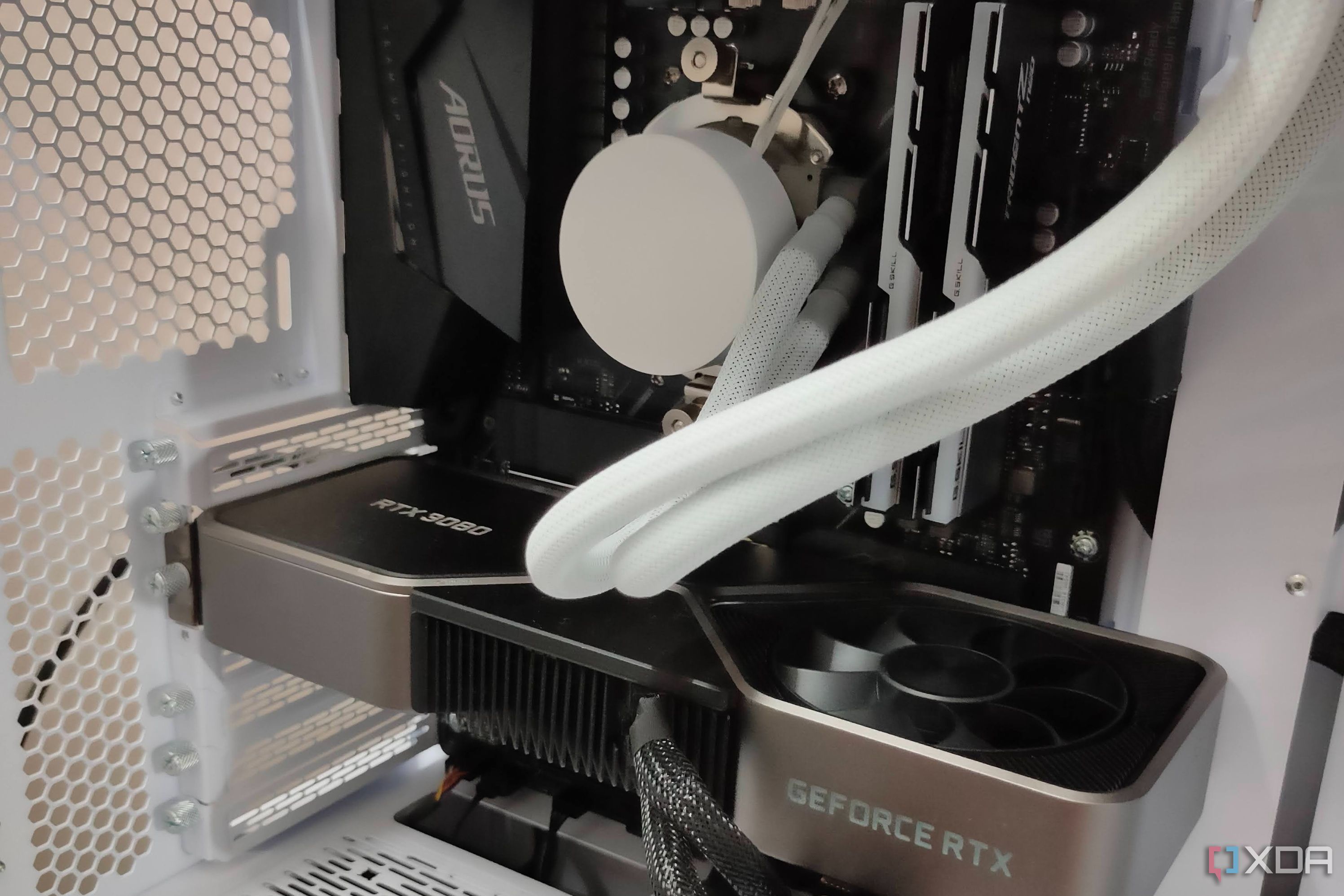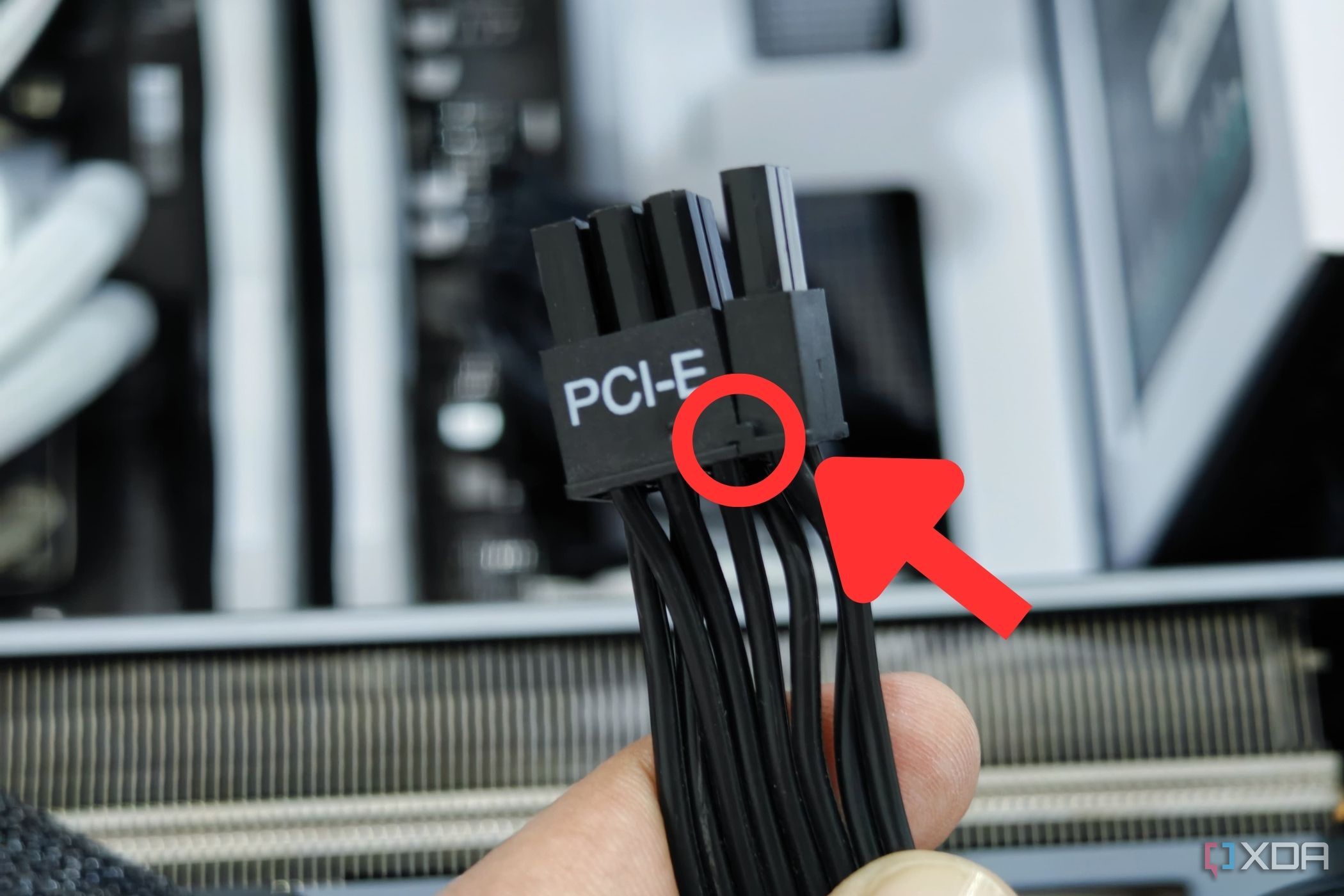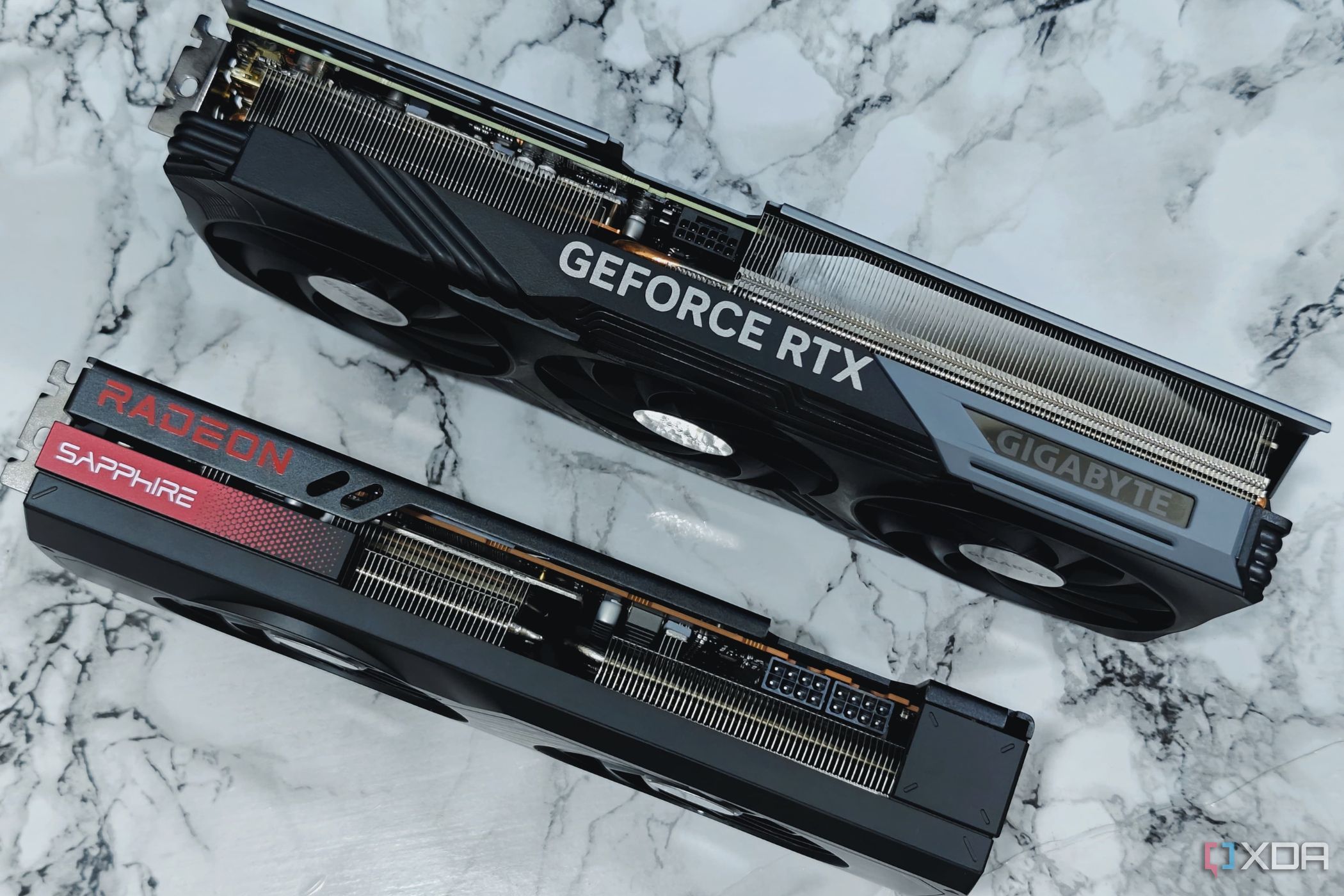Building a PC may seem daunting, especially if you’re new to the world of desktops, but it isn’t as complicated as you might think. Putting all the parts together and assembling them in the case, however, is only half the task. The real challenge is to ensure you’re getting all the connections correct before you finally get to cable management. If this is your first time building a PC, and you’re wondering how to connect your new graphics card (GPU) to the excellent power supply (PSU), then you’ve come to the right place.
Which cables do you need?
The number of cables depends on your GPU’s appetite
6+2 pin PCIe connector (top) and 8 pin EPS12V connector (bottom)
The first thing you need to know is that a graphics card uses a PCIe cable to draw power from the power supply. Both graphics cards and power supply units have PCIe connectors. A standard PCIe cable has six pins and a dangling, 2-pin connector to form a 6+2 pin connector, for a total of eight pins. Non-modular power supplies will have these cables attached to the PSU, while modular options will allow you to remove them. I recommend picking up a module power supply unit to ensure you don’t have to manage any unused cables, or even buy shorter cables to reduce the cable slack if you want to take your build to the next level in terms of tidiness.
Most modern PSUs on the market these days — regardless of whether they are modular or non-modular — come bundled with cables that are clearly labeled, so you can’t miss the PCIe cable or mistake it for an EPS cable that’s used to connect the CPU. Yes, the CPU and GPU use different cables, so keep that in mind. The pin connectors on the 8-pin EPS12V and the 6+2-pin GPU PCIe cables are shaped differently, so you can’t possibly plug the wrong cable even if they’re not labeled.
6 mistakes to avoid when pairing your CPU and GPU
Buying the wrong CPU or GPU for your build can leave you with limited performance, wasted dollars, or no upgrade path.
How to connect your GPU to your PSU
You’ll likely need more than one cable
Now that you’ve identified the right cable for your graphics card, let’s look into how you actually connect everything together.
- Locate the PCIe connectors on the PSU.
- Plug the required number of PCIe cables into the PSU by matching the shapes of the pins.
- Plug the other end of the PCIe cable with the 6+2-pin connector into the GPU by once again matching the shapes.
- Each PCIe cable has a 6-pin and a 2-pin connector, meaning it can either be used as a 6-pin cable or combined as an 8-pin cable, depending on the power requirements or the availability of connectors on the GPU.
- You can combine the connectors by aligning the clips on the connectors, as shown below.
- Make sure the connectors are fully inserted. You’ll hear a snap once they lock in place.
Most modern GPUs out there demand more power to run, so they need more than a single PCIe cable to work. You’ll find these connectors on top of the graphics cards, so please ensure you’re using the right number of PCIe cables to supply enough power to the GPU. You can also refer to your GPU’s specifications to see how much power it needs. Most modern graphics cards out there will have up to two connectors, meaning you’ll need two 8-pin PCIe cables to power them. Nvidia decided to use 12VHPWR connectors on many of its latest GPUs to reduce the number of required connectors, so don’t be surprised to see one of those on your GeForce RTX 40-series GPU.
What about the new 12VHPWR connectors?
You’ll only find these connectors on Nvidia GPUs for now
The Radeon 7700XT GPU, for example, sports two PCIe connectors, whereas the Gigabyte GeForce RTX 4070 Ti has a 12VHPWR connector. Not all PSUs out there have a 12VHPWR port, though, as only the new ATX 3.0 PSUs include them. You can, however, use a 12VHPWR adapter to plug the regular 8-pin PCIe cable to draw power for these GPUs, so you don’t necessarily have to ditch your old PSU yet. In fact, almost all Nvidia GPUs using the new 12VHPWR connector come with an adapter to make your lives easier. If not, you can pick up an adapter using the link below.
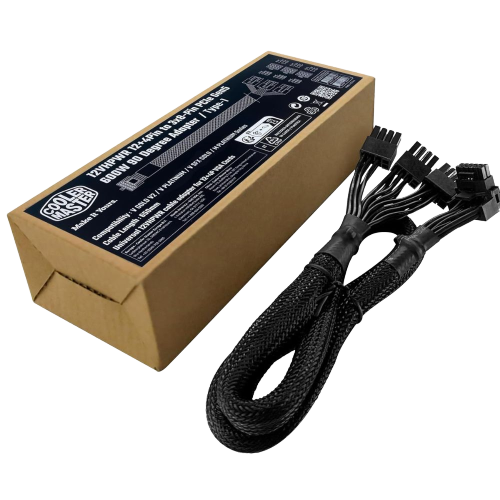
Cooler Master 12VHPWR adapter cable
Use this 12VHPWR adapter from Cooler Master to connect Nvidia’s new 40 series graphics cards with your older PSUs that don’t have the new connector yet.
Closing thoughts
That’s everything you need to know about connecting your graphics card to the power supply. Unless you’re using one of the new Nvidia 40-series graphics cards with a 12VHPWR connector, you can simply use the PCIe cables to connect both components. Those dealing with a 12VHPWR connector can consider buying an ATX 3.0 PSU with the 12VHPWR connector or using an adapter (included with the GPU) to power the graphics card. I am leaving links to a couple of my favorite power supply units for gaming on the market right now, so be sure to check them on your way out.
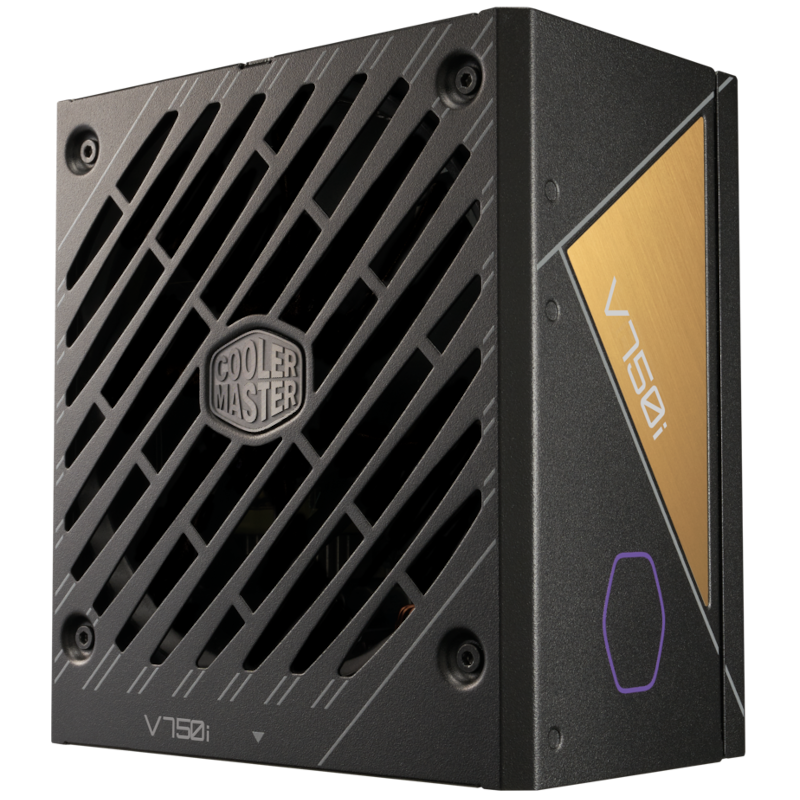
Cooler Master V750 Gold i
Cooler Master’s V series of Gold i power supplies are 80 Plus Gold certified with full support for the latest ATX 3.0 standard. The company makes some excellent power supplies and this series is a perfect example with smart thermal mode, fully modular cable management, and a full 10-year warranty.
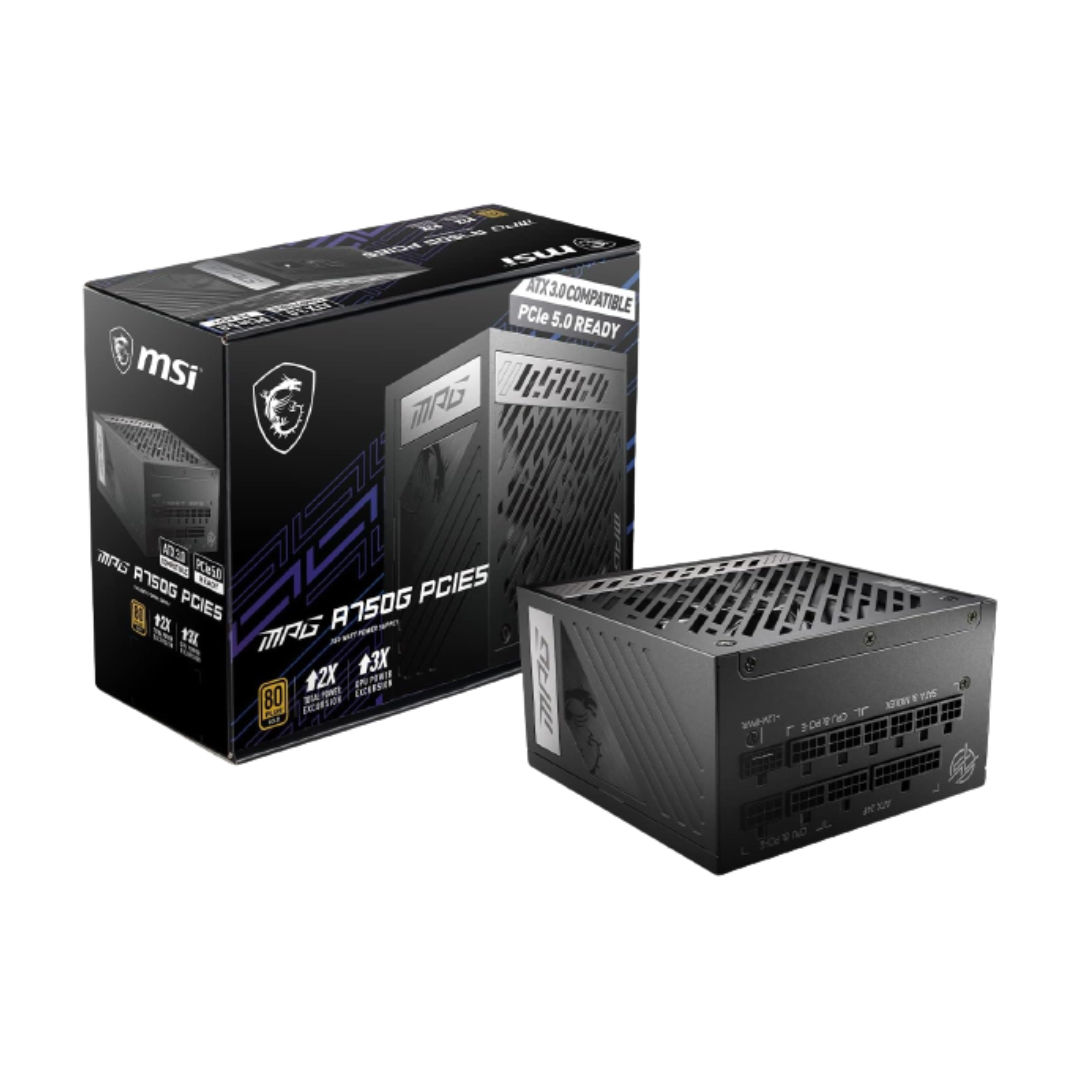
MSI MPG A750G
The MSI MPG A750G power supply unit has 750W of total output, enough for all but the most demanding hardware configurations. It’s 80 Plus Gold rated for efficiency and has a native 12VHPWR cable for the latest Nvidia GeForce graphics cards.
